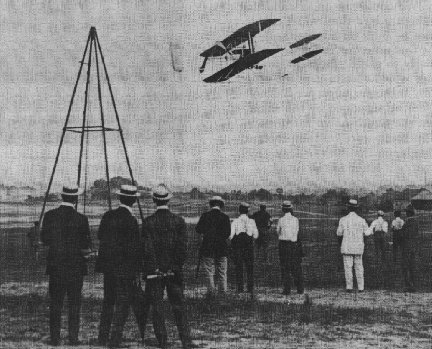AvStop Magazine Online
With all the knowledge and skill acquired in thousands of flights in the last ten years, I would hardly think today of making my first flight on a strange machine in a twenty-seven mile wind, even if I knew that the machine had already been flown and was safe. After these years of experience I look with amazement upon our audacity in attempting flights with a new and untried machine under such circumstances. Yet faith in our calculations and the design of the first machine, based upon our tables of air pressures, secured by months of careful laboratory work, and confidence in our system of control developed by three years of actual experiences in balancing gliders in the air had convinced us that the machine was capable of lifting and maintaining itself in the air, and that, with a little practice, it could be safely flown.
Wilbur, having used his turn in the unsuccessful attempt on the l4th, the right to the first trial now belonged to me. After running the motor a few minutes to heat it up, I released the wire that held the machine to the track, and the machine started forward in the wind. Wilbur ran at the side of the machine, holding the wing to balance it on the track. Unlike the start on the l4th, made in a calm, the machine, facing a 27-mile wind, started very slowly. Wilbur was able to stay with it till it lifted from the track after a forty-foot run. One of the Life Saving men snapped the camera for us, taking a picture just as the machine had reached the end of the track and had risen to a height of about two feet. The slow forward speed of the machine over the ground is clearly shown in the picture by Wilbur's attitude. He staved along beside the machine without any effort.

Wilbur Wright flying at Ft. Mymer, Virginia. The aircraft is commonly known as the Signal Corps Flyer. July 1909.